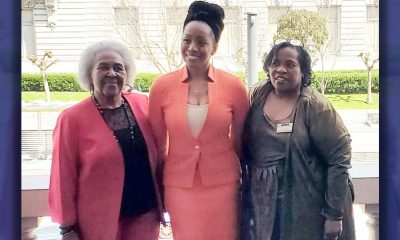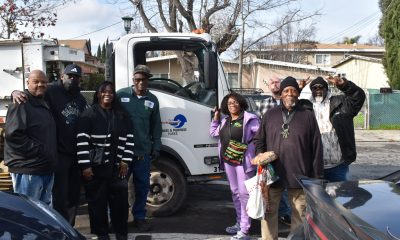City Government
Mayor London Breed Celebrates Completion of Haight Street Transit Improvement Project
New streetscape design enhances pedestrian safety, activates public spaces, and creates a more vibrant Haight Street corridor

Mayor London N. Breed joined city leaders, merchants, and community members at a ribbon-cutting ceremony on July 28 to celebrate the completion of the Upper Haight Transit Improvement and Pedestrian Realm Project. The transformative project improves pedestrian safety, enhances transit efficiency, and builds on the neighborhood’s vibrant character.
The two-year, $22.3 million project was based on a community-supported vision to revitalize and improve street safety and public spaces in the historic Haight-Ashbury neighborhood. The redesign of Haight Street enables the most significant possible degree of flexibility by reimagining urban spaces that can evolve with the changing demands of the community.
“The Haight has a rich history that attracts tourists and locals alike, and with the completion of this streetscape project, we are making this historic neighborhood more inviting for all,” said Breed. “As we emerge from this pandemic and begin to see our city come alive again, it’s critical that we invest in the cultural vibrancy of our neighborhoods and provide our small businesses with the support they need to help drive our economic recovery.”
The project was designed to incorporate numerous safety features, including new pedestrian-scale lighting, ADA-compliant curb ramps, and expanded bus-boarding areas. The project also replaced the aging sewer system to bolster resiliency, repaved seven blocks of Haight Street between Stanyan Street and Central Avenue, and added new street trees and sidewalks to beautify the neighborhood. Crews performed additional sewer and repaving work on Masonic Avenue between Haight and Waller streets.
“The improvements are a welcome addition to the well-known neighborhood with its trove of independent retail establishments, cafes, and restaurants,” said Sunshine Powers, president of the Haight Street Merchants Association. “This project provides many wonderful enhancements that retain the character of this magnificent, sparkly corridor and will keep us thriving.”
Construction began in September 2018 and continued uninterrupted during San Francisco’s Stay-at-Home Order, which allowed work to continue on essential infrastructure. This project supported more than 130 construction and electrical trade jobs at a time when putting people to work was crucial.
San Francisco Public Works oversaw the design and construction management for the project. Key partners included the San Francisco Municipal Transportation Agency, San Francisco Public Utilities Commission, Office of Economic and Workforce Development, and the Department of Technology.
Through the Office of Economic and Workforce Development’s (OEWD) Construction Mitigation Program, OEWD staff partnered with Public Works to provide small businesses with the necessary support to help minimize construction impacts.
“The redesign and safety enhancements bring much-needed improvements to this historic part of the City. The project serves as a great example of successful collaboration among City agencies in partnership with the community and our elected representatives to enhance neighborhood safety and livability,” said Acting Public Works Director Alaric Degrafinried.
“The changes we see on Haight Street today include a faster travel time for Muni passengers, bringing meaningful improvements to the community as we emerge from the pandemic.” said San Francisco Municipal Transportation Agency Director of Transportation, Jeffrey Tumlin. “The signals are designed to prioritize the 7-Haight– one of our highest ridership lines. Muni is delivering similar projects on most of our lines and we are proud to offer these improvements on Haight Street.”
“This project is another great example of City agencies working together to bring much needed improvements to our communities,” said SFPUC Acting General Manager Michael Carlin. “By upgrading and replacing our aging infrastructure, we are ensuring the safe and reliable delivery of critical sewer services to our customers.”
Funding for the improvements came from various voter-approved sources, including Proposition K sales tax revenue, the 2011 Roadway Improvement and Street Safety Bond, and the 2014 San Francisco Transportation and Road Improvement Bond. Additional funding sources included the City’s General Fund, Prop AA Grant, and Wastewater Enterprise Renewal and Replacement Funds.
“The Transportation Authority is proud to provide transportation sales tax and other funds for this project, which began with the community’s advocacy for safety and streetscape improvements along Haight Street,” said Transportation Authority Executive Director Tilly Chang. “The new traffic signals, pedestrian scale lighting, bulb-outs and curb ramps will enhance community access for the neighborhood and help achieve San Francisco’s citywide Vision Zero goal as well.”
Additional project information is available at www.sfpublicworks.org/upper-haight.
This report is courtesy of the San Francisco Mayor’s Office of Communications.
Activism
Oakland Post: Week of April 24 – 30, 2024
The printed Weekly Edition of the Oakland Post: Week of April 24 – 30, 2024
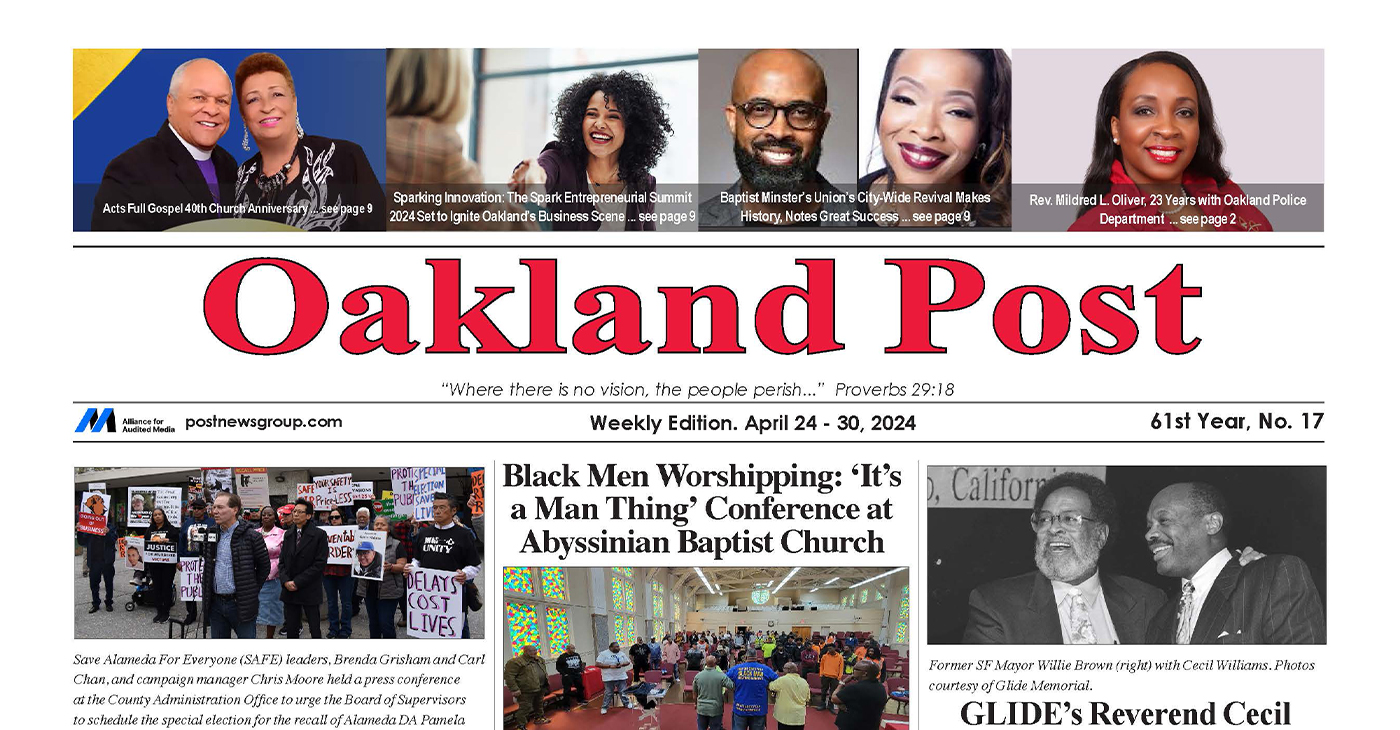
To enlarge your view of this issue, use the slider, magnifying glass icon or full page icon in the lower right corner of the browser window. ![]()
Alameda County
DA Pamela Price Stands by Mom Who Lost Son to Gun Violence in Oakland
Last week, The Post published a photo showing Alameda County District Attorney Pamela Price with Carol Jones, whose son, Patrick DeMarco Scott, was gunned down by an unknown assailant in 2018.
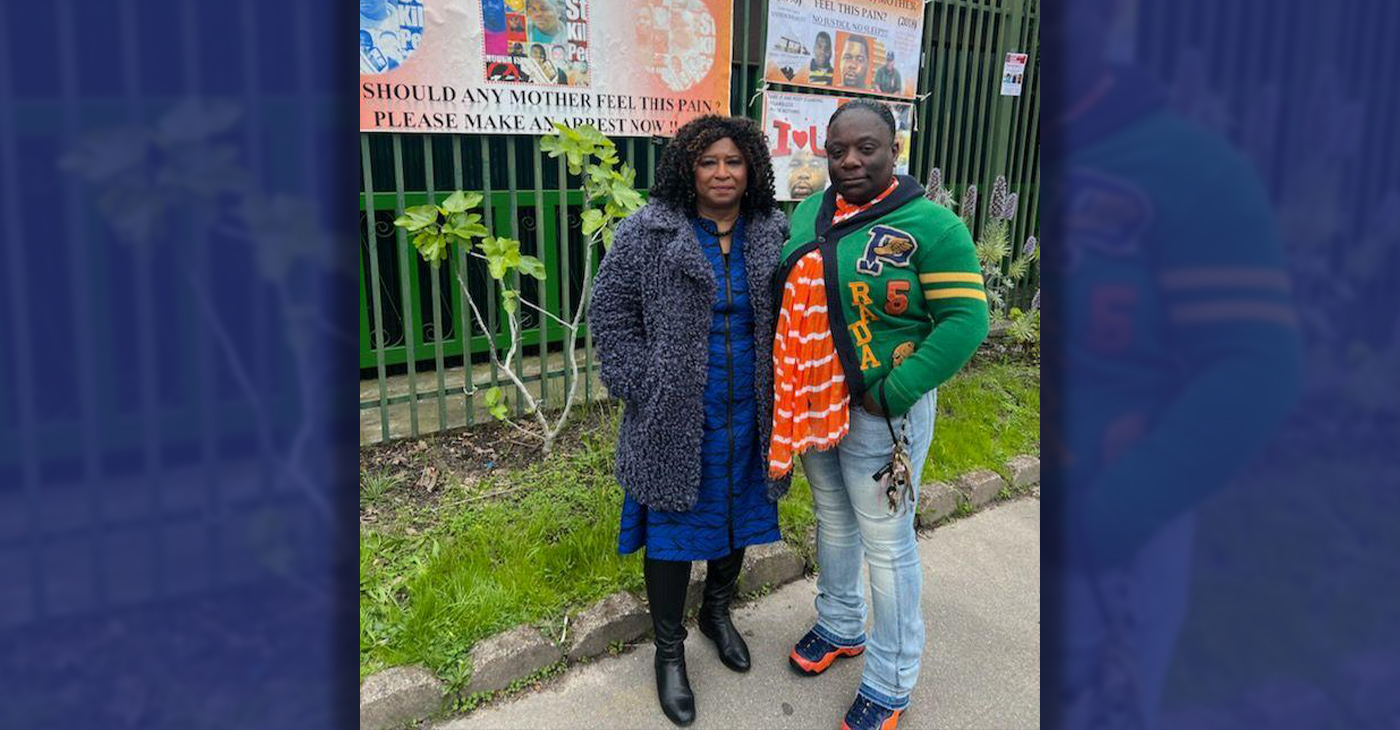
Publisher’s note: Last week, The Post published a photo showing Alameda County District Attorney Pamela Price with Carol Jones, whose son, Patrick DeMarco Scott, was gunned down by an unknown assailant in 2018. The photo was too small for readers to see where the women were and what they were doing. Here we show Price and Jones as they complete a walk in memory of Scott. For more information and to contribute, please contact Carol Jones at 510-978-5517 at morefoundation.help@gmail.com. Courtesy photo.
City Government
Vallejo Welcomes Interim City Manager Beverli Marshall
At Tuesday night’s Council meeting, the Vallejo City Council appointed Beverli Marshall as the interim city manager. Her tenure in the City Manager’s Office began today, Wednesday, April 10. Mayor Robert McConnell praised Marshall’s extensive background, noting her “wide breadth of experience in many areas that will assist the City and its citizens in understanding the complexity of the many issues that must be solved” in Vallejo.

Special to The Post
At Tuesday night’s Council meeting, the Vallejo City Council appointed Beverli Marshall as the interim city manager. Her tenure in the City Manager’s Office began today, Wednesday, April 10.
Mayor Robert McConnell praised Marshall’s extensive background, noting her “wide breadth of experience in many areas that will assist the City and its citizens in understanding the complexity of the many issues that must be solved” in Vallejo.
Current City Manager Michael Malone, whose official departure is slated for April 18, expressed his well wishes. “I wish the City of Vallejo and Interim City Manager Marshall all the best in moving forward on the progress we’ve made to improve service to residents.” Malone expressed his hope that the staff and Council will work closely with ICM Marshall to “ensure success and prosperity for the City.”
According to the Vallejo Sun, Malone stepped into the role of interim city manager in 2021 and became permanent in 2022. Previously, Malone served as the city’s water director and decided to retire from city service e at the end of his contract which is April 18.
“I hope the excellent work of City staff will continue for years to come in Vallejo,” he said. “However, recent developments have led me to this decision to announce my retirement.”
When Malone was appointed, Vallejo was awash in scandals involving the housing division and the police department. A third of the city’s jobs went unfilled during most of his tenure, making for a rocky road for getting things done, the Vallejo Sun reported.
At last night’s council meeting, McConnell explained the selection process, highlighting the council’s confidence in achieving positive outcomes through a collaborative effort, and said this afternoon, “The Council is confident that by working closely together, positive results will be obtained.”
While the search for a permanent city manager is ongoing, an announcement is expected in the coming months.
On behalf of the City Council, Mayor McConnell extended gratitude to the staff, citizen groups, and recruitment firm.
“The Council wishes to thank the staff, the citizens’ group, and the recruitment firm for their diligent work and careful consideration for the selection of what is possibly the most important decision a Council can make on behalf of the betterment of our City,” McConnell said.
The Vallejo Sun contributed to this report.
-

 Activism4 weeks ago
Activism4 weeks agoOakland Post: Week of March 27 – April 2, 2024
-

 #NNPA BlackPress4 weeks ago
#NNPA BlackPress4 weeks agoBeloved Actor and Activist Louis Cameron Gossett Jr. Dies at 87
-
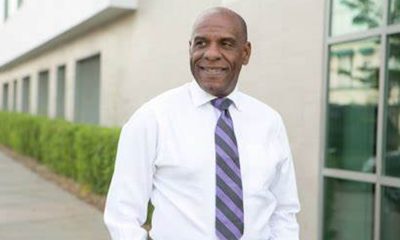
 Community1 week ago
Community1 week agoFinancial Assistance Bill for Descendants of Enslaved Persons to Help Them Purchase, Own, or Maintain a Home
-
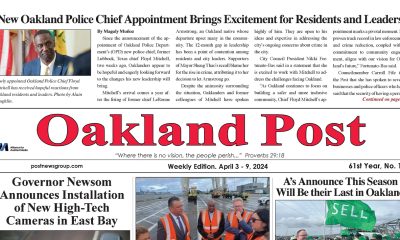
 Activism3 weeks ago
Activism3 weeks agoOakland Post: Week of April 3 – 6, 2024
-

 Business2 weeks ago
Business2 weeks agoV.P. Kamala Harris: Americans With Criminal Records Will Soon Be Eligible for SBA Loans
-
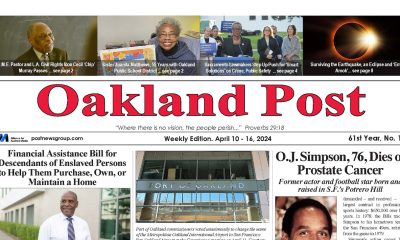
 Activism2 weeks ago
Activism2 weeks agoOakland Post: Week of April 10 – 16, 2024
-

 Community2 weeks ago
Community2 weeks agoAG Bonta Says Oakland School Leaders Should Comply with State Laws to Avoid ‘Disparate Harm’ When Closing or Merging Schools
-

 Community7 days ago
Community7 days agoOakland WNBA Player to be Inducted Into Hall of Fame



